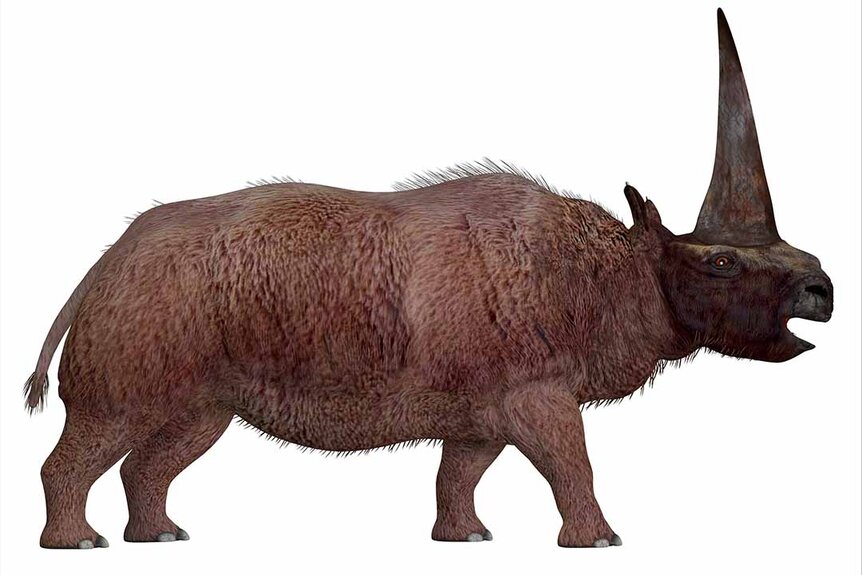Create a free profile to get unlimited access to exclusive videos, sweepstakes, and more!
Woolly Rhino Genome Recovered from Fossilized Hyena Poop
As amazing as it is unglamorous.
When John Hammond cooked up the idea for Jurassic Park, he needed the skills of the world’s brightest geneticists and a little help from the fossil record. The earliest additions to the fledgling park were enabled by preserved DNA locked inside prehistoric mosquitoes trapped in orbs of amber. The basic premise was pretty simple: if you can’t get DNA straight from the source, look for another animal who ate the DNA you want.
Later, InGen scientists working for the updated Jurassic World facility found ways to extract DNA from other sources, including directly from well-preserved specimens, allowing them to expand their resurrected prehistoric menagerie. Now, InGen scientists (and real-world scientists) have a new source of extinct DNA: fossilized poop.
Ancient Hyenas Ate Woolly Rhinos and Pooped Out Their DNA
Getting usable DNA from dinosaurs 66 million years after the fact might be too much to ask for, but DNA from more recently deceased animals like the dodo, the woolly mammoth, and the woolly rhinoceros is well within our possibility. But some extinct genomes are easier to recover than others.
RELATED: Now We Have an Instruction Manual for Resurrecting the Extinct Tasmanian Tiger
Mammoths, for instance, have the benefit of having lived in polar regions. The environment is dry and exceedingly cold, perfect for preserving soft tissues for thousands of years. Scientists have found mammoth specimens in the polar permafrost so well preserved that they might have been happily walking the arctic just a few days ago, before having died peacefully in their sleep.
The woolly rhinoceros hung out in a lot of the same places as mammoths at roughly the same time and enjoyed the same levels of preservation along their Siberian stomping grounds. For that reason, Siberian woolly rhinos are comparatively well understood, while the European population is less so.
Recently, however, researchers found a new way to recover European woolly rhino DNA in the fossilized feces of the scavengers who ate them. It’s not quite as glamorous as mosquitos in amber, mineralized scavenger crap doesn’t look as good as a cane ornament, but it’ll get the job done in a pinch.
RELATED: Prehistoric woolly rhino is so well-preserved it could have just gone to sleep
Paleontologists found coprolites (fossilized feces) belonging to cave hyenas inside two caves in Germany, according to a study published in The Royal Society's Biology Letters. Analysis of the DNA inside the hyena poop revealed a bunch of hyena DNA alongside the DNA of the European woolly rhino. Of course, the process of digestion damaged the eaten soft tissue which, combined with the ravages of time, led to some DNA degradation. Still, researchers were able to determine that the European and Siberian populations were genetically distinct.
Perhaps more exciting than the DNA find itself is the untapped (albeit gross) resource on offer to paleontologists. Sifting through the bathroom leavings of long-dead animals might lead to the next gold rush in prehistoric genetic research. When they say ‘you are what you eat’ they really mean it!
Catch the entire Jurassic World trilogy streaming now on Peacock.































